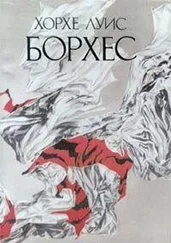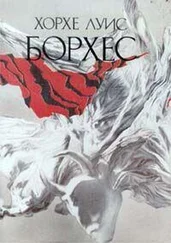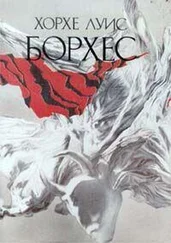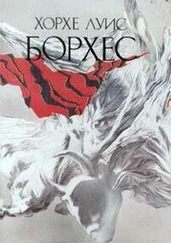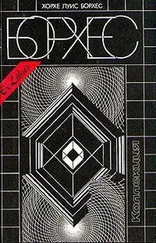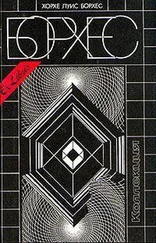Хорхе Борхес - Collected Fictions
Здесь есть возможность читать онлайн «Хорхе Борхес - Collected Fictions» весь текст электронной книги совершенно бесплатно (целиком полную версию без сокращений). В некоторых случаях можно слушать аудио, скачать через торрент в формате fb2 и присутствует краткое содержание. Год выпуска: 1999, ISBN: 1999, Издательство: Penguin (UK), Жанр: Старинная литература, на английском языке. Описание произведения, (предисловие) а так же отзывы посетителей доступны на портале библиотеки ЛибКат.
- Название:Collected Fictions
- Автор:
- Издательство:Penguin (UK)
- Жанр:
- Год:1999
- ISBN:9780140286809
- Рейтинг книги:5 / 5. Голосов: 1
-
Избранное:Добавить в избранное
- Отзывы:
-
Ваша оценка:
- 100
- 1
- 2
- 3
- 4
- 5
Collected Fictions: краткое содержание, описание и аннотация
Предлагаем к чтению аннотацию, описание, краткое содержание или предисловие (зависит от того, что написал сам автор книги «Collected Fictions»). Если вы не нашли необходимую информацию о книге — напишите в комментариях, мы постараемся отыскать её.
Collected Fictions — читать онлайн бесплатно полную книгу (весь текст) целиком
Ниже представлен текст книги, разбитый по страницам. Система сохранения места последней прочитанной страницы, позволяет с удобством читать онлайн бесплатно книгу «Collected Fictions», без необходимости каждый раз заново искать на чём Вы остановились. Поставьте закладку, и сможете в любой момент перейти на страницу, на которой закончили чтение.
Интервал:
Закладка:
* Yellow fever epidemic: 1870-1871.
* Married ... one Saavedra, who was a clerk in the Ministry of Finance: Fishburn and Hughes tell us that "employment in the Ministry of Finance is considered prestigious, and consistent with the status of a member of an old and well-established family." They tie "Saavedra" to Corneliode Saavedra, a leader in the first criollo government of Argentina, in 1810, having deposed the Spanish viceroy. This is a name, then, that would have had resonances among the Argentines similar to a Jefferson, Adams, or Marshall among the Americans, even if the person were not directly mentioned as being associated with one of the founding families. "Saavedra" will also invariably remind the Spanish-language reader of Miguel de Cervantes, whose second (maternal) surname was Saavedra.
* She still abominated Artigas, Rosas, and Urquiza: Rosas has appeared in these notes several times. Here he is the archenemy not only of the Buenos Aires Unitarians but of the family as well, because he has confiscated their property and condemned them to "shabby gentility," as Borges would have put it. José Gervasio Artigas (1764-1850) fought against the Spaniards for the liberation of the Americas but was allied with the gauchos and the Federalist party against the Unitarians; in 1815 he defeated the Buenos Aires forces but was later himself defeated by help from Brazil. Justo José Urquiza (1801-1870) was president of the Argentinian Confederation from 1854 to 1860, having long supported the Federalists (and Rosas) against the Unitarians. As a military leader he often fought against the Unitarians, and often defeated them. In addition, he was governor (and caudillo) of Entre Ríos province.
* Easterners instead of Uruguayans: Before Uruguay became a country in 1828, it was a Spanish colony which, because it lay east of the Uruguay River, was called the Banda Oriental ("eastern shore"). (The Uruguay meets the Paranáto create the huge estuary system called the Río de la Plata, or River Plate; Montevideo is on the eastern bank of this river, Buenos Aires on the west.) La Banda Oriental is an old-fashioned name for the country, then, and orientales ("Easterners") is the equally old-fashioned name for those who live or were born there. Only the truly "elderly" have a right to use this word.
* Plaza del Once: Pronounced óhn-say, not wunce. This is generally called Plaza Once, but the homonymy of the English and Spanish words make it advisable, the translator thinks, to modify the name slightly in order to alert the English reader to the Spanish ("eleven"), rather than English ("onetime" or "past"), sense of the word. Plaza Once is one of Buenos Aires' oldest squares, "associated in Borges's memory with horse-drawn carts" (Fishburn and Hughes), though later simply a modern square.
* Barracas: Once a district virtually in the country, inhabited by the city's elite, now a "working-class district" in southern Buenos Aires, near the Plaza Constitución (Fishburn and Hughes).
* Sra. Figueroa's car and driver. Perhaps the Clara Glencairn de Figueroa of the next story in this volume, "The Duel"; certainly the social sphere in which these two Sras. Figueroa move is the same.
* Benzoin: Probably used, much as we use aromatic preparations today, to clear the nasal passages and give a certain air of health to the elderly. An aromatic preparation called alcoholado (alcohol and bay leaves, basically) is much used in Latin America as a kind of cureall for headaches and various aches and pains and for "refreshing" the head and skin; one presumes this "benzoin" was used similarly.
* One of Rosas' posses: The Mazorca ("corncob," so called [or so folk etymology has it] for the Federalist party's agrarian ties), a private secret police force-c«m-army employed by Rosas to intimidate and terrorize the Unitarians after his rise to Federalist power. The Mazorcas beat and murdered many people, and so the elderly lady is right to have been shocked and frightened. (See also the story "Pedro Salvadores"in In Praise of Darkness.)
The Duel
* Clara Glencairn de Figueroa: Clara's name is given here as Christian name + patronymic or family (father's) name + de indicating "belonging to" or, less patriarchally, "married to" + the husband's last name. This indication of a character by full name, including married name, underscores Clara's equivocal position in life and in the world of art that she aspires to: a woman of some (limited) talent in her own right, with a "career" or at least a calling in which she is entitled to personal respect, versus the "wife of the ambassador." This tension is noted a couple of pages later, when "Mrs." Figueroa, having won a prize, now wants to return to Cartagena "in her own right," not as the ambassador's wife that she had been when she had lived there before. It is hard for the English reader, with our different system of naming, to perceive the subtleties of JLB's use of the conventions of naming in Hispanic cultures.
* Juan Crisóstomo Lafinur: Lafinur (1797-1824), a great-uncle of Borges', was the holder of the chair of philosophy "at the newly-formed Colegio de la Unión del Sud" (Fishburnand Hughes) and thus a "personage."
* Colonel Pascual Pringles: Pringles (1795-1831) was a distinguished Unitarian military leader from the province of San Luis. "[Rather than surrender his sword to the enemy" in defeat, Fishburn and Hughes tell us, "he broke it and threw himself into the river."
* The solid works of certain nineteenth-century Genoese bricklayers: This snide comment refers to the Italian immigrant laborers and construction foremen who built those "old houses of Buenos Aires" that Marta paints; she is influenced, that is, not by an Italian school of painting (which would be acceptable, as "European" was good; see the first line of the next paragraph in the text) but by Italian immigrant (and therefore, in Buenos Aires society hierarchy, "undesirable" or "inferior") artisans. Note in "The Elderly Lady" the narrator's mild bigotry in the statement that one of the daughters married a "Sr. Molinari, who though of Italian surname was a professor of Latin and a very well-educated man." The social lines between the old criollo families (descendants of European, especially Spanish, colonists), the newer immigrant families, those with black or Indian blood, etc. were clear, especially in the nineteenth century and the early years of the twentieth.
* Mrs. Figueroa: Here, clear in the Spanish, though difficult to convey in the English, the judge slights Clara Glencairn de Figueroa by referring to her by her married name (Figueroa's wife) rather than by her "personal" and "professional" name, Clara Glencairn. She is looked down on, as the story subtly shows, for her social standing, which is in contrast to the vie bohème that she would like to think she had lived and the reputation as a painter she would like to think she had earned for herself. Note "Clara Glencairn" throughout the paragraph on p. 383, for the more "professional" or "personally respectful" mode of naming, and note the way the story swings between the two modes as one or another of Clara's "statuses" is being emphasized.
The Other Duel
* Adrogué:In the early years of the century, a town south of Buenos Aires (now simply a suburb or enclave of the city) where Borges and his family often spent vacations; a place of great nostalgia for Borges.
* Battle of Manantiales: In Uruguay. For many years (ca. i837-ca. 1886) Uruguay was torn by rivalry and armed conflicts between the Blancos (the conservative White party) led by, among others, Manuel Oribe and Timoteo Aparicio (see below), and the Colorados (the more liberal Red party) led by Venancio Flores and Lorenzo Baiile. Manantiales (1871) marked the defeat of Aparicio's Blancos by the Colorado sunder Batlle. Once Cardoso and Silveira are seen joining up with Aparicio's forces, this understated sentence tells the Argentine or Uruguayan reader (or any other Latin American reader familiar, through little more than high school history classes, with the history of the Southern Cone—these dates and places are the very stuff of Latin American history) that their end was fated to be bloody.
Читать дальшеИнтервал:
Закладка:
Похожие книги на «Collected Fictions»
Представляем Вашему вниманию похожие книги на «Collected Fictions» списком для выбора. Мы отобрали схожую по названию и смыслу литературу в надежде предоставить читателям больше вариантов отыскать новые, интересные, ещё непрочитанные произведения.
Обсуждение, отзывы о книге «Collected Fictions» и просто собственные мнения читателей. Оставьте ваши комментарии, напишите, что Вы думаете о произведении, его смысле или главных героях. Укажите что конкретно понравилось, а что нет, и почему Вы так считаете.

